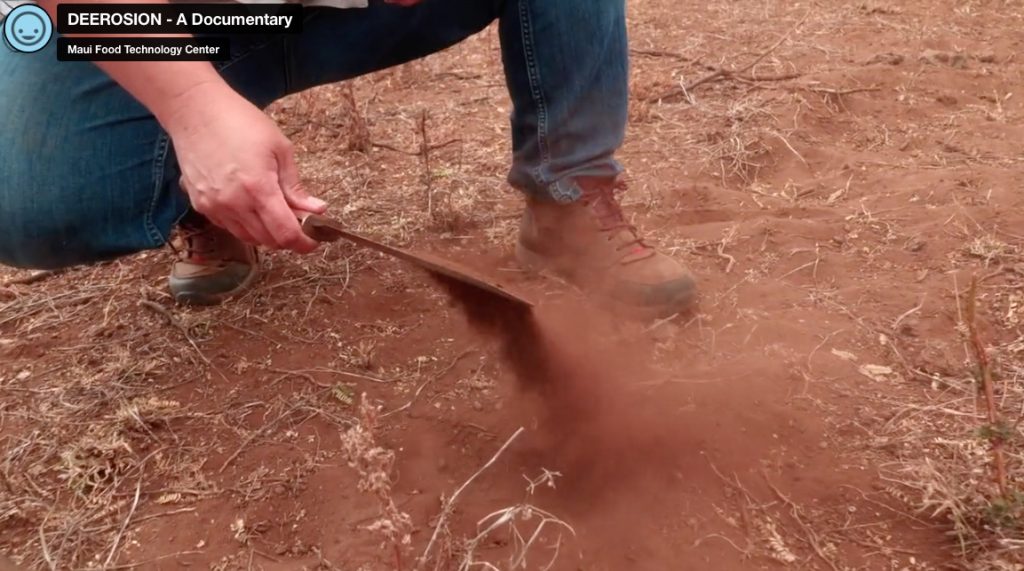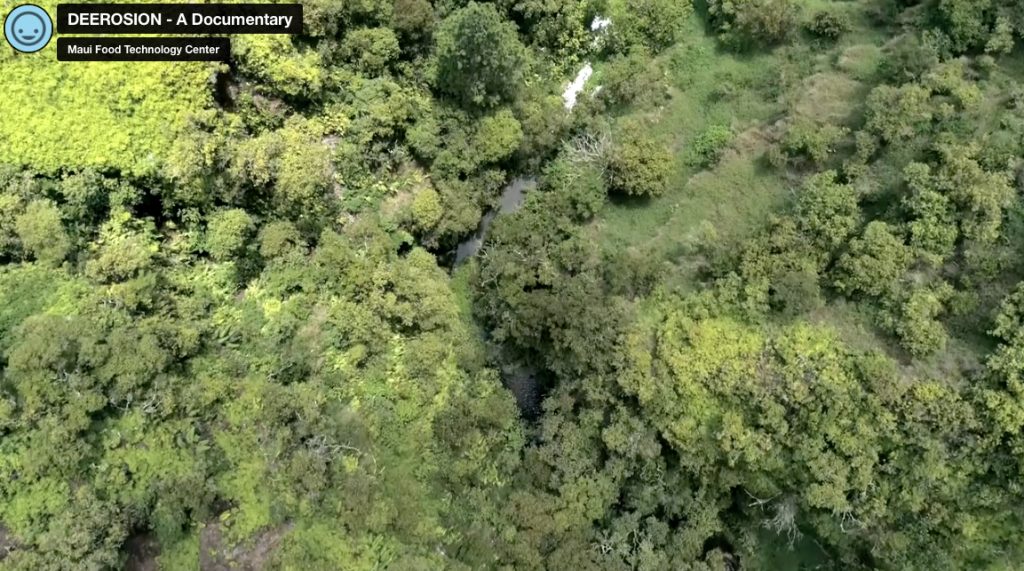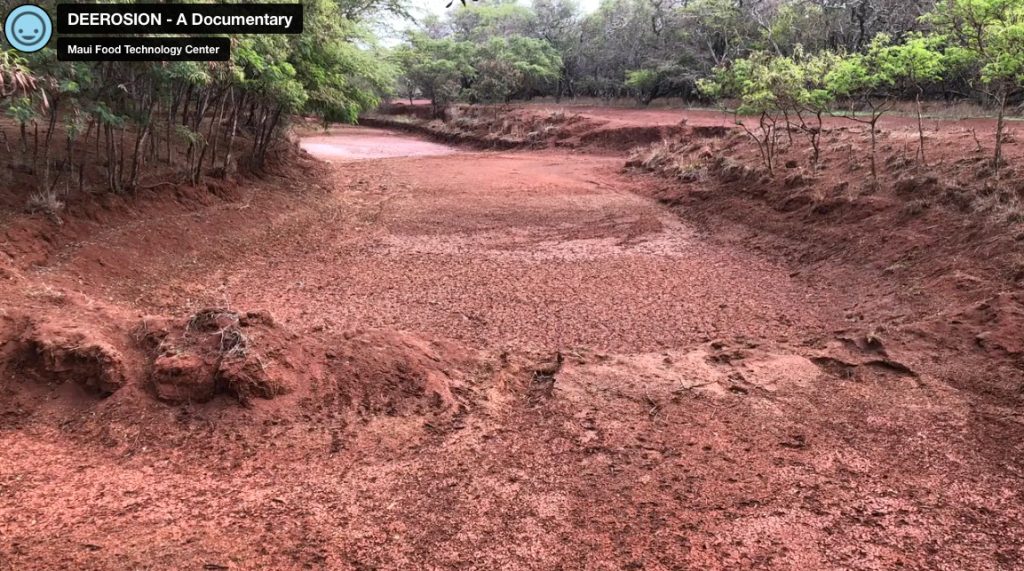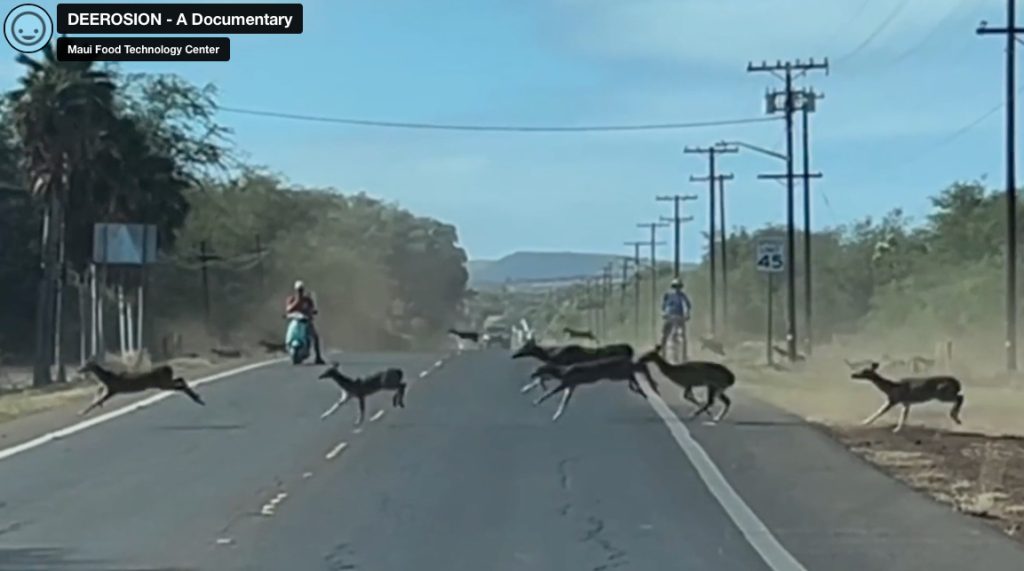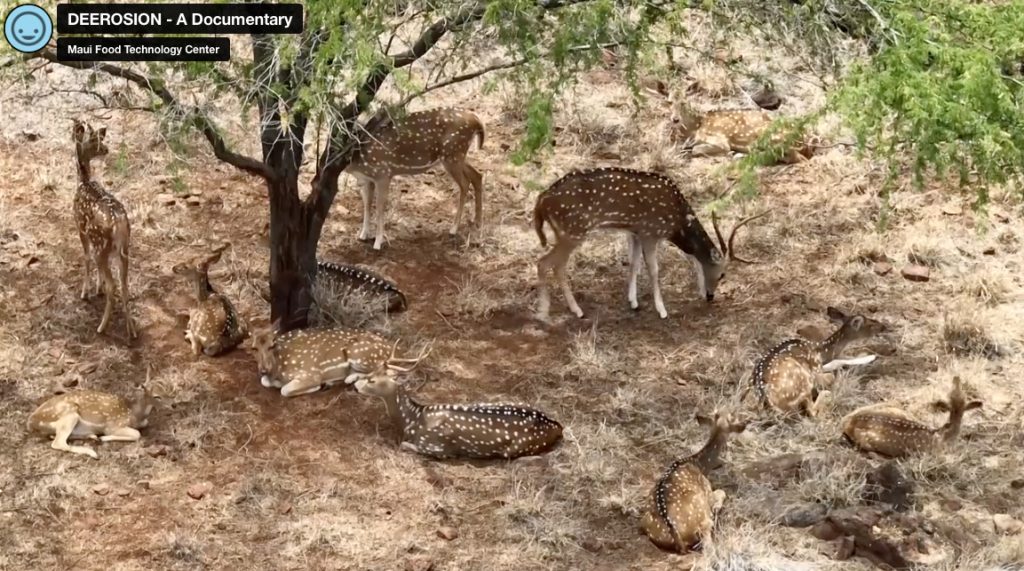Kahikolu Project on Maui targets axis deer and widespread environmental impacts

Prolific herds of hungry axis deer continue to wreak havoc in Maui County, damaging farm crops, overgrazing livestock pasture lands, threatening fragile watersheds and even encroaching in heavily urbanized areas like Kahului Airport’s runways and baggage claim areas.
Without natural predators in the islands, the deer have flourished unchecked. Now, due in part to a Maui County-funded initiative, some deer are falling prey to hungry humans — those with a taste for protein-rich venison or willing to purchase deer-hide handbags, wallets, table tops and throw rugs. It’s all part of a campaign to use economic incentives to bring down burgeoning deer populations.
Axis deer population estimates vary. A 2021 estimate indicated that Maui County’s deer herds were 145,000 to 167,000 individuals (60,000 to 70,000 on Maui; 60,000 on Molokaʻi; and 25,000 to 37,000 on Lānaʻi), according to a February 2024 study by the Arizona State University Swette Center for Sustainable Food Systems. The economic impact of deer overpopulation on agricultural crops could be $50 to $275 loss per deer or $80 to $20,000 loss per crop acre, depending on the type of crop, the study reports.
According to a 2016 University of Hawaiʻi Economic Research Organization study, the economic impact of deer on Maui was $2.1 million per year. Since then, there’s been a fivefold increase in the deer population, according to the Swette Center study. With a 3:2 ratio of female to male deer and a 235-day gestation period, deer herds are expected to increase 20% annually without management.
In 2023, the Maui County Department of Agriculture asked the Swette Center to quantify the damage of axis deer and find economically viable ways to use axis deer to address food insecurity.
On June 20, Maui County Council members received an update on the County’s efforts during a meeting of the Agriculture, Diversification, Environment and Public Transportation Committee, chaired by Council Member Gabe Johnson.
Council members learned about the Kahikolu Project, a Maui County initiative led by the Maui Food Technology Center. The project aims to manage Maui County’s deer population in partnership with government agencies, ranchers, farmers, landowners, conservation organizations and local communities.
The initiative helped produce a series of “Deerosion” videos by Daniel Emhof that are available for viewing here on the Kahikolu Project website. The videos include aerial views of large axis deer herds and illustrate the environmental damage to grasslands and the watershed.
Ranchers and farmers tell the story of how deer herds threaten to put them out of business. Farmer Michael Marchand of Lapaʻau Farm on Maui said he saw a little over a half-acre wiped out in two nights, and “that’s tens of thousands of dollars.”
“A one-time hit from the financial revenue of that is a pretty big issue for farmers because there’s not a lot of margin. To have that consistently happen would pretty much wipe out a farmer’s business,” Marchand said.
Appearing before committee members, Office of Economic Development Director Luana Mahi reported that her office has provided a number of grants to fund axis deer mitigation, including one that brought a mobile slaughterhouse to Maui in April. The grantee is going through licensing and registration processes and working to get approvals from the US Department of Agriculture and Food and Drug Administration, she said.
The slaughterhouse will work primarily on pet food production because other sources provide USDA-certified sources of venison for human consumption, she said.
The County also has assisted with the cost of venison processing, she said, with Maui Nui Venison donating more than 86,000 pounds of venison to places like Nāpili Noho S-Turns, Rodeo General Store, ʻUlupalakua Store and Uncle Archie’s. Venison was still available as of last week for people to help themselves to 2 pounds each, Mahi said. The venison is affordable because of Maui County subsidies.
Some grants have been transferred to the County Department of Agriculture for fencing and irrigation lines, for example, she said. The County also helps fund axis deer traps and aerial flights for the state Department of Land and Natural Resources.
DLNR has six axis deer traps located in different spots and then rotates them in different areas every three to four months, Mahi said.
Zeke Kalua of the Office of the Mayor described “live catch options” for axis deer. Deployed in a partnership with DLNR’s Division of Forestry and Wildlife, the traps’ design is based on a prototype introduced in Texas, he said.
The trap panels are prebuilt, assembled in the field and operated by remote control activated by a cellphone application, Kalua said. The remote control opens and closes the trap gates. One active device trapped 17 deer in an overnight period, he said. Bait includes Gatorade, water, molasses blocks and other enticements.
In order for deer to be used for human consumption, the animals need to be calm when they’re killed as humanely as possible. After capture, “they need to have a cooling-down period,” Kalua said. Otherwise, a stressed deer will have sour meat unfit for human consumption.
Captured deer are led into a trailer where they are kept calm until they can be brought to a USDA inspector at the “point of kill,” Kalua said.
The USDA inspectors ensure that the meat is healthy and safe for human consumption.
Efforts are made to use as much of the animal beneficially as venison for human consumption, pet food and for a variety of axis hide products such as handbags, wallets, floor rugs and hat bands.
The goal is to create new jobs and diversify Maui’s now visitor-industry-based economy, Kalua said.
Axis deer hide products are created by Lisa Pastana, according to Mahi. Examples of her handcrafted creations can be found at rowdyoutdoors.com.
Gubernatorial proclamations since March 23, 2022, have declared an emergency caused by the overpopulation of axis deer and drought in Maui County. Gov. Josh Green’s 14th proclamation relating to axis deer was signed May 3 and remains in effect until at least July 2.
The emergency proclamation suspends laws that would delay, impede or be detrimental to reducing axis deer populations. The measure also allows the creation of buffers or fences to keep deer away from roadways, airports and runways, and it permits immediate action to reduce deer herds to sustainable numbers.






